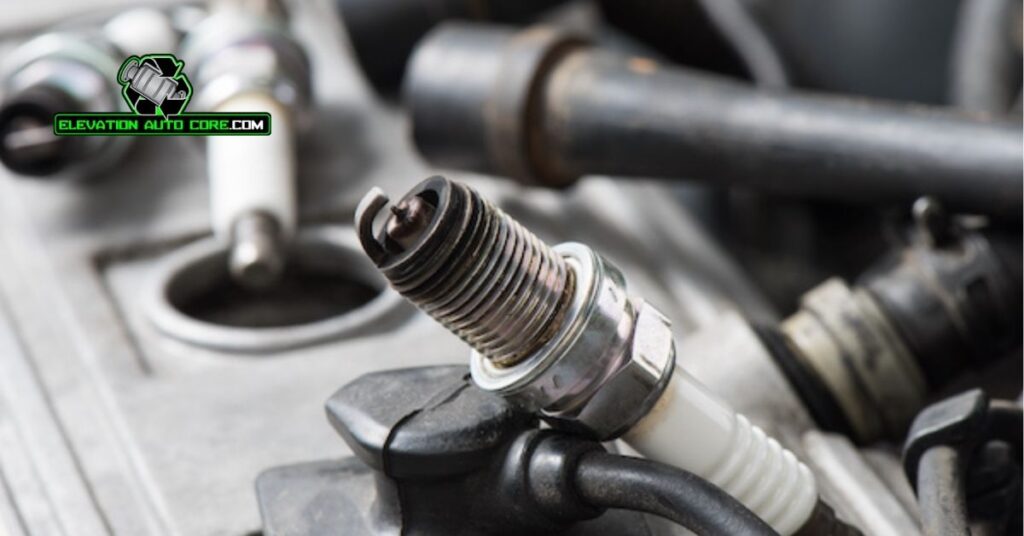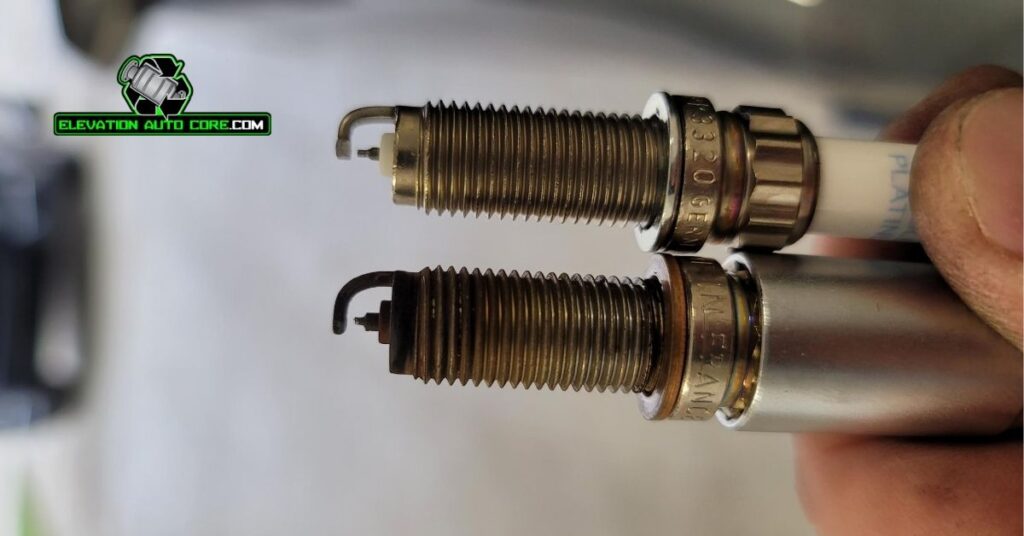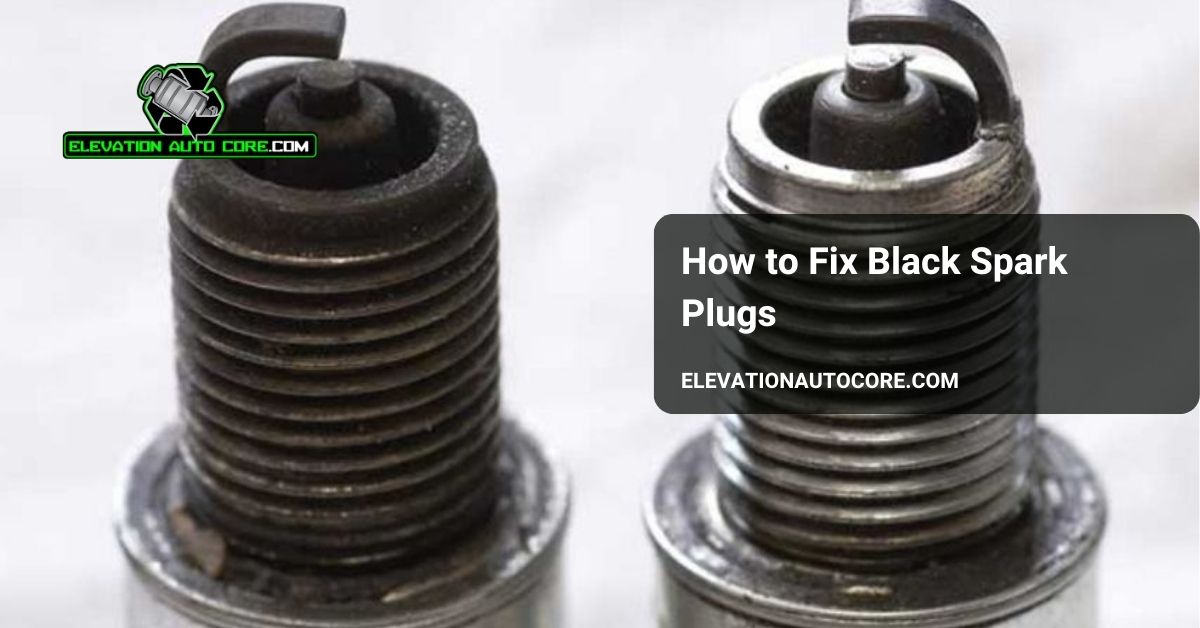Are your black spark plugs causing engine trouble and leaving you frustrated? These tiny components play a crucial role in your vehicle’s performance, and when they’re coated in soot or oil, it’s a sign of underlying issues. Understanding the cause and knowing how to fix it can save you time, money, and future headaches—so let’s immerse.
Entities: black spark plugs, engine trouble, vehicle’s performance, soot, oil, underlying issues.
Understanding Black Spark Plugs

Black spark plugs often point to issues that affect engine efficiency. Identifying the causes and recognizing key signs can help resolve the problem quickly.
Causes Of Black Spark Plugs
Excess fuel in the combustion chamber can result from a rich air-fuel mixture, leading to carbon deposits on spark plugs. Faulty oxygen sensors or malfunctioning fuel injectors can contribute to this condition. Combustion from poor-quality fuel may also coat the plugs with soot.
Oil leakage inside the engine is another common cause. Worn-out piston rings, failing valve seals, or cylinder wall damage allow oil to seep into the combustion chamber, creating an oily residue on the plugs. Short trips or prolonged idling may also cause incomplete combustion, gradually blackening spark plugs over time.
Signs Indicating The Problem
Misfiring engines are a key sign of black spark plugs. You may notice inconsistent engine behavior or struggle to maintain power during acceleration. Reduced fuel economy is another indicator. Excess fuel consumption often stems from the inefficient combustion linked to fouled plugs.
Rough idling can also signal the issue. If the engine vibrates more than usual when idle, the plugs may not be firing correctly. Visible black deposits on the spark plugs confirm the problem upon inspection. Frequent difficulty starting the engine can further reinforce this diagnosis.
Tools And Materials Needed

Addressing black spark plug issues successfully requires the right tools and materials. Proper preparation ensures efficient troubleshooting and repair.
Essential Tools
A spark plug socket and ratchet allow for easy removal of spark plugs. Torque wrenches ensure proper tightening when reinstalling plugs. Use wire brushes or specialized spark plug cleaning tools to remove deposits effectively. A spark plug gap gauge ensures the correct electrode gap before installation. Multimeters can diagnose electrical issues in the ignition system. Keep a flashlight handy for better visibility in tight spaces.
Recommended Materials
Replacement spark plugs are crucial if existing ones are beyond repair. A quality electrical contact cleaner helps clear residue from spark plug connections. Dielectric grease protects and lubricates the spark plug boot for better electrical conductivity. Anti-seize lubricant prevents thread galling during installation. High-performance fuel additives improve combustion efficiency, reducing future carbon deposits. Ensure you have shop towels or rags to clean the spark plug area during repairs.
Step-By-Step Guide On How To Fix Black Spark Plugs

Fixing black spark plugs restores engine performance and prevents further damage. Follow these steps to resolve this issue effectively.
Step 1: Inspect The Spark Plugs
Begin by removing the spark plugs using a spark plug socket and ratchet. Examine each plug for soot, oil buildup, or any physical damage like cracks. Pay attention to the color and type of deposits, as black, oily deposits indicate oil leakage, while dry, sooty deposits suggest a rich air-fuel mixture. Identify if all plugs show similar signs or if only certain ones are affected.
Step 2: Clean Or Replace Them
Use a wire brush to remove dry deposits from the spark plug’s surface. Apply electrical contact cleaner for thorough cleaning if the deposits persist. Ensure all residue is eliminated. For plugs with heavy damage, oily buildup, or structural issues, replace them with new ones. Check the manufacturer’s specifications for the correct type of spark plug before installation.
Step 3: Address Underlying Issues
Investigate potential causes behind the deposits to prevent recurrence. Adjust the air-fuel mixture if combustion is too rich, targeting proper balance. Test the oxygen sensor and fuel injectors with a multimeter to ensure they’re functioning correctly. Repair or replace worn piston rings, valve seals, or damaged cylinder walls to stop oil leaks. Incorporate high-quality fuel additives during refueling to improve combustion efficiency. Always resolve the root problem, not just the symptoms, for lasting results.
Preventative Tips For Avoiding Black Spark Plugs

Taking proactive measures maintains your vehicle’s performance and prevents black spark plugs from recurring.
Regular Maintenance Practices
Frequent vehicle inspections help identify early signs of spark plug issues. Replace spark plugs at intervals recommended by your manufacturer to prevent deposit buildup. Check the condition of the air filter regularly and replace it to ensure proper airflow to the combustion chamber. Clean the fuel injectors periodically, ensuring optimal fuel delivery and avoiding a rich air-fuel mixture. Monitor engine oil levels to prevent internal leaks that cause oily residue on plugs. Use fuel additives occasional use to clean the combustion system and improve fuel quality.
Adjusting Engine Settings
Tuning your air-fuel ratio ensures proper combustion and minimizes excess fuel in the chamber. Calibrate oxygen sensors to detect and correct air-fuel imbalances. Inspect and adjust the carburetor if your vehicle has one, as poorly set carburetors can lead to incomplete combustion. Maintain proper spark timing by checking the ignition system routinely. Use premium fuel when needed, especially if your vehicle requires it, to reduce carbon deposits and keep spark plugs clean.
Common Mistakes To Avoid
Neglecting to identify the type of deposits on your spark plugs often leads to ineffective repairs. Sooty plugs suggest excessive fuel consumption, while oily residue points to potential oil leakage issues. Skipping this step can make it harder to address the root cause.
Using incorrect tools or materials risks damaging the spark plugs or surrounding components. Always rely on tools like spark plug sockets and torque wrenches and materials like dielectric grease and anti-seize lubricant for safe handling and installation.
Over-tightening or under-tightening spark plugs can result in thread damage or inefficient performance. Installing spark plugs with a torque wrench ensures proper torque levels, preventing unnecessary wear.
Failing to address underlying issues causes the problem to reoccur. A rich air-fuel mixture, damaged oxygen sensors, or malfunctioning fuel injectors require immediate checkups when dealing with black spark plugs.
Ignoring regular maintenance, such as replacing worn plugs and cleaning fuel injectors, invites future complications. Stick to manufacturer-recommended schedules to maintain optimal engine performance.
Cleaning spark plugs improperly, such as using harsh abrasives or excessive force, may shorten their lifespan. Use suitable cleaning methods, including a soft wire brush and contact cleaner, to preserve their integrity.
Conclusion
Addressing black spark plugs is essential for maintaining your vehicle’s performance and preventing costly repairs. By understanding the causes, using the right tools, and following proper maintenance practices, you can tackle the issue effectively and ensure your engine runs smoothly. Stay proactive with regular inspections and adjustments to keep your spark plugs clean and your vehicle operating at its best.

